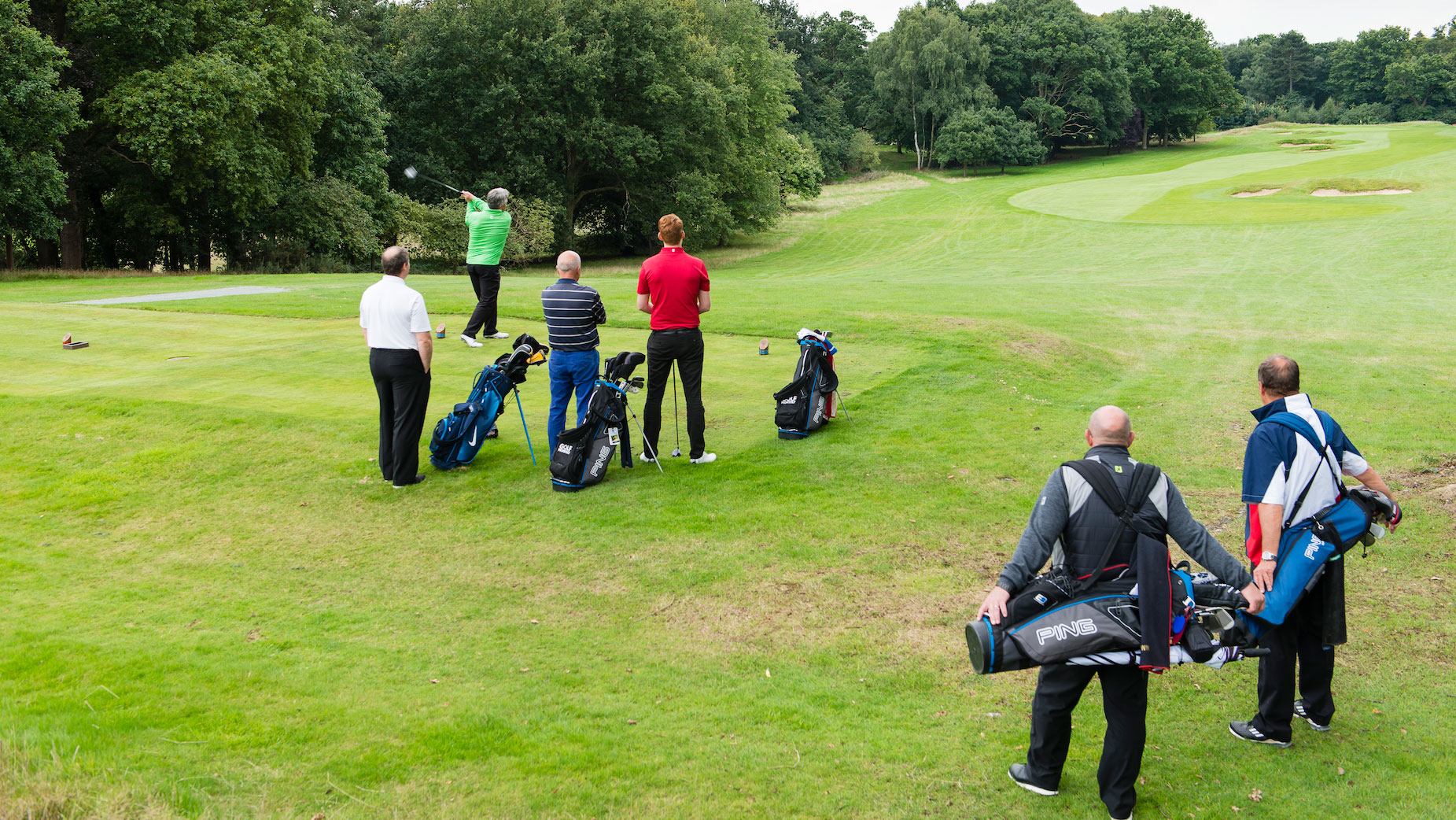Slow Play In Golf – When, And When Not To Let Groups Through
It’s accepted golfing etiquette to let faster groups through, but when and how should you do it and when might it be counter-productive?


There’s no specific Rule in golf stating you must let faster groups play through on the golf course, but it’s accepted etiquette that makes sense. If your group is travelling around the course slowly and another group appears behind, you should let them pass (or at least offer to do so.) If you were driving a slow-moving vehicle on the road, you wouldn’t let a snaking queue of traffic build up behind you.
In The R&A’s Pace of Play manual – A comprehensive guide providing a wide range of solutions to the problem of slow play, Section 4 covers “Player Behaviour.” Sub-section 4.4 specifically relates to “Allowing Faster Groups to Play Through.” It states:
“If a group cannot keep its position on the course for whatever reason, and is delaying the group behind, then it should invite the group behind to play through so that group can play at the pace it is capable of.”
That’s pretty clear. But sometimes groups are reluctant to let players through. Yes, sometimes it’s because of pride or a lack of understanding of the etiquette, which can cause frustration. In some instances, though, it’s because the let-through might be counter-productive to the overall pace of play on course.
Here we consider when and how the let through should take place and when it might not be appropriate.
When You Should Let Through
When a group behind is clearly playing faster than you on a quiet course – The most clear-cut let-through scenario. Your fourball is playing a round at four-and-a-half-hour pace and a twoball appears playing at three-hour pace. You might delay your game by five minutes to let them pass but everyone will enjoy their game at the speed they’re comfortable with. Simple stuff.
And do it at the first opportunity. Don’t think, ‘we’ll let them through in a couple of holes’ or ‘we might be able to up the pace a little.’ Just take a moment to stand aside and let faster traffic pass.
Get the Golf Monthly Newsletter
Subscribe to the Golf Monthly newsletter to stay up to date with all the latest tour news, equipment news, reviews, head-to-heads and buyer’s guides from our team of experienced experts.
If you’ve clearly lost ground on the group in front on a busier day, you should let faster groups through when appropriate to do so. Otherwise, frustration will build behind and your group will feel increased pressure – everyone will enjoy their day less as a result.
Par-3s provide a great opportunity to let groups through with minimal extra time added. Allow the group behind to play up as you reach the green, or just after you have teed off if they reach the tee quickly. Then allow them to putt out as you consider your next shots, let them move away to the next as you finish out. They will likely be nearly out of range on the next hole by the time you reach the tee.
That process can also work on longer holes. Or, let them tee off after you have, move down the hole together but then let them move ahead.
If a single player approaches, it’s very quick and easy to let them pass. They’ll be away and gone in minutes. In the dim and distant past, it used to be considered that a single player had no standing on the course – this is not the case. Accepted etiquette is that faster groups should be allowed to play through no matter the number of players in that group.
When You Shouldn’t Let Through
If the course is simply packed out, fast groups will just have to accept that pace of play will be set. If you’re looking at groups stretching off into the distance in front of you, with no gaps to be seen, then there’s little point in letting the group behind pass, even if they’re standing with hands on hips looking fed up!
In fact, letting a group through in those circumstances will simply slow things down for the groups further behind as, inevitably, when letting even the fastest groups through, your group must remain static for at least a few extra minutes.
Having said this – It may still be beneficial from an enjoyment point of view to let the faster group pass as you might feel more relaxed in doing so. In Sub-section 4.4 of The R&A’s Pace of Play manual, it suggests:
“Sometimes, if a number of groups on the course are playing slowly, playing through does not always achieve its objective, but it remains good etiquette.”
It might just make for fewer frosty encounters in the clubhouse post round!
The lost ball traditionally results in a let-through. But it isn’t always the best way to keep play moving. With the new three-minute search Rule, if a player has a provisional ball in play and a group appears on the tee behind with, say, one minute search time left, it makes sense to complete the search and then move on to the provisional. Making the group behind wait a minute will keep play flowing far better than if your group has to wait a full 12 minutes for that group to complete the hole.
Towards the end of a round, the let-through becomes less beneficial. If you’re caught up on the 17th, the let-through will cost your group considerable time to save the group behind just a few minutes. It may also knock those playing in the group behind off their rhythm at a crucial point in their rounds.
As with most elements of life – good communication is key. If you feel any pressure from the group behind, ask them if they’d like to play through. They might say they’re very happy where they are and everyone can relax. If you feel that letting a group through would be counter-productive, explain why. Most of us are pretty reasonable and a brief, friendly chat to find the best solution will keep all satisfied – Surely that’s good etiquette.

Fergus is Golf Monthly's resident expert on the history of the game and has written extensively on that subject. He has also worked with Golf Monthly to produce a podcast series. Called 18 Majors: The Golf History Show it offers new and in-depth perspectives on some of the most important moments in golf's long history. You can find all the details about it here.
He is a golf obsessive and 1-handicapper. Growing up in the North East of Scotland, golf runs through his veins and his passion for the sport was bolstered during his time at St Andrews university studying history. He went on to earn a post graduate diploma from the London School of Journalism. Fergus has worked for Golf Monthly since 2004 and has written two books on the game; "Great Golf Debates" together with Jezz Ellwood of Golf Monthly and the history section of "The Ultimate Golf Book" together with Neil Tappin , also of Golf Monthly.
Fergus once shanked a ball from just over Granny Clark's Wynd on the 18th of the Old Course that struck the St Andrews Golf Club and rebounded into the Valley of Sin, from where he saved par. Who says there's no golfing god?
-
 Rory McIlroy vs Bryson DeChambeau: Who Are We Picking To Win The 2025 Masters?
Rory McIlroy vs Bryson DeChambeau: Who Are We Picking To Win The 2025 Masters?We're set up for a blockbuster final day at Augusta National where Rory McIlroy and Bryson DeChambeau play together in the final group
By Elliott Heath Published
-
 The Masters Crystal Rory McIlroy Has Already Won At Augusta National This Week
The Masters Crystal Rory McIlroy Has Already Won At Augusta National This WeekMcIlroy leads going in to the final round at Augusta National, with the four-time Major winner already bagging some silverware before he looks to claim the Green Jacket
By Matt Cradock Published